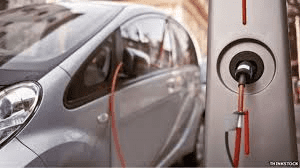Concerns about carbon dioxide emissions, the greenhouse effect, and the rapid depletion of fossil fuels have heightened the need to develop and use new environmentally benign, long-lasting alternatives to internal combustion engines (ICE). As a result, EVs have been increasingly popular in the recent decade, owing to low fuel gas emissions and reduced reliance on oil.
Electric”Electric vehicles (EVs) have raised at an exponential rate over the last 20 years, thanks to advancements in battery technology and lower battery costs. EVs were traditionally more expensive than gasoline-powered automobiles until recently. Now you can find them at affordable prices everywhere. But before you decide to buy one, try it out by renting the vehicle first, since it comes with free delivery in Wales.”
EV automatic conductive charging system
The EV connector and the charge inlet are connected directly in conductive charging. Standard electrical outlets or charging stations can be used to plug in cables. Because they simply use plugs and sockets to convey electrical energy through physical metal contacts, conductive chargers for EVs have the advantages of maturity, simplicity, and low cost. In EV charging stations that use the conductive approach, there are two options.
EV conductive DC charging system
A DC charger is used to charge the battery off-board. It uses specialist DC EV supply equipment to provide electricity to an EV in a public spot from an appropriate off-board charger. Fast DC charging is the term for it. Unlike inbuilt chargers, there is power level flexibility. It can be utilized up to 50 KW, which means the battery can be charged from empty to 80% full in 20 minutes. However, depending on the condition of the battery and the vehicle’s quality, this quantity may vary.
All of the three have variations in pins, phases and voltages that are used according to the power input in the vehicle. The limitations are listed below:
. Charger and battery losses are higher.
. A battery Fast charging can only charge the battery to 70-80 percent SOC, resulting in a shorter battery life.
. Cables: For wires that can be easily pulled, the maximum current is limited.
. A significant investment
Grid impacts that isn’t good
. Only at public charging stations is this option accessible.
. Controlling the temperature
EV conductive AC charging system
Electrical outlets most typically use AC chargers for their charging process. To charge, simply plug the vehicle into a standard electrical outlet or a higher-power outlet intended specifically for electric vehicles. As you can see, this form of filling station requires very little space and supplies. Charging, on the other hand, takes longer and necessitates the use of an onboard charging unit, which adds weight to the vehicle. Onboard chargers are an exception because their power source is limited.
Moreover, companies like Statiq are offering the partnership with them by installing an EV charging station at your market place which will promote the idea of using more electric cars in India.
EV wireless charging
Other alternatives could emerge alongside electric charging stations in a world where electric car charging is a crucial point in enhancing energy switching. Wireless charging is one of the options. With a few exceptions, wireless automobile charging is an improved version of smartphone charging. It can be the real game changing technology to provide the flawless EV charging.
Help keep news FREE for our readers
Supporting your local community newspaper/online news outlet is crucial now more than ever. If you believe in independent journalism, then consider making a valuable contribution by making a one-time or monthly donation. We operate in rural areas where providing unbiased news can be challenging. Read More About Supporting The West Wales Chronicle























